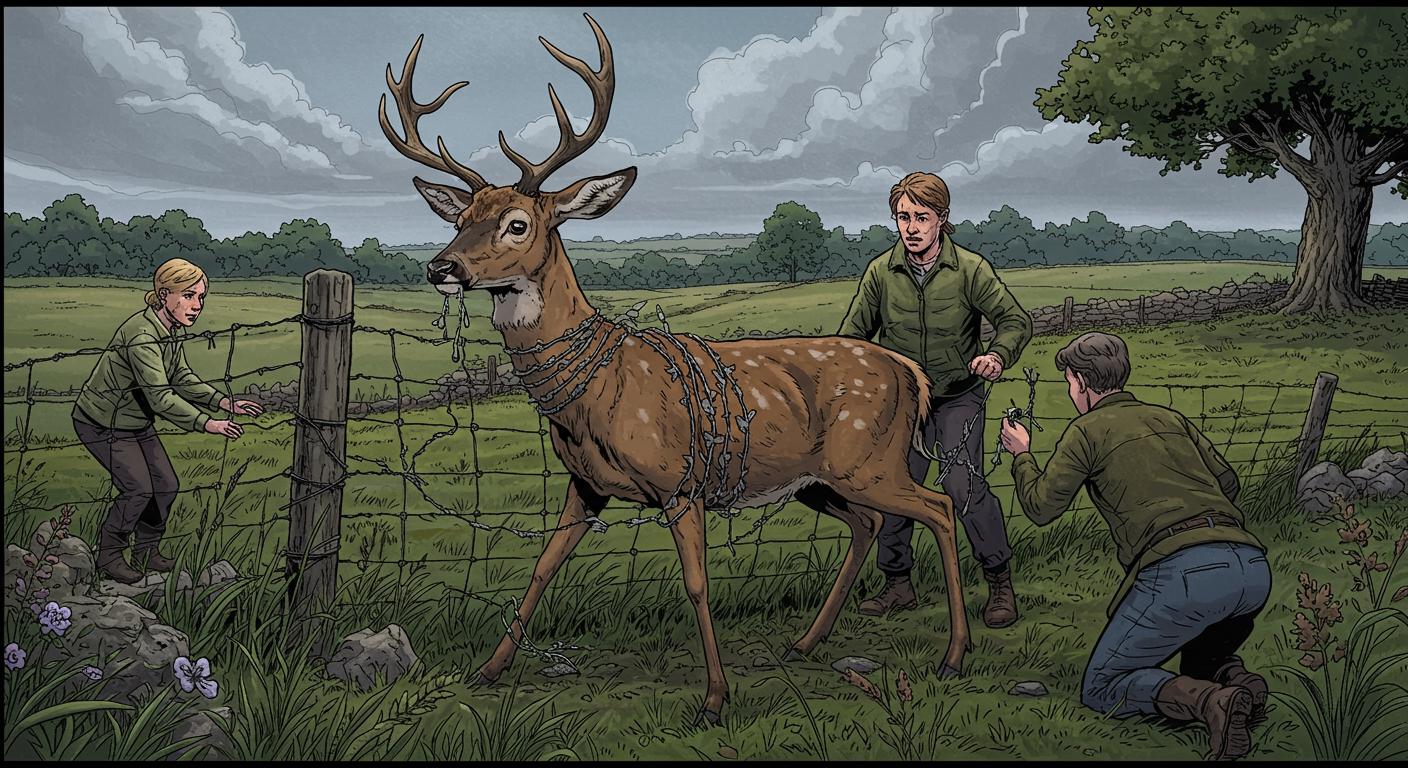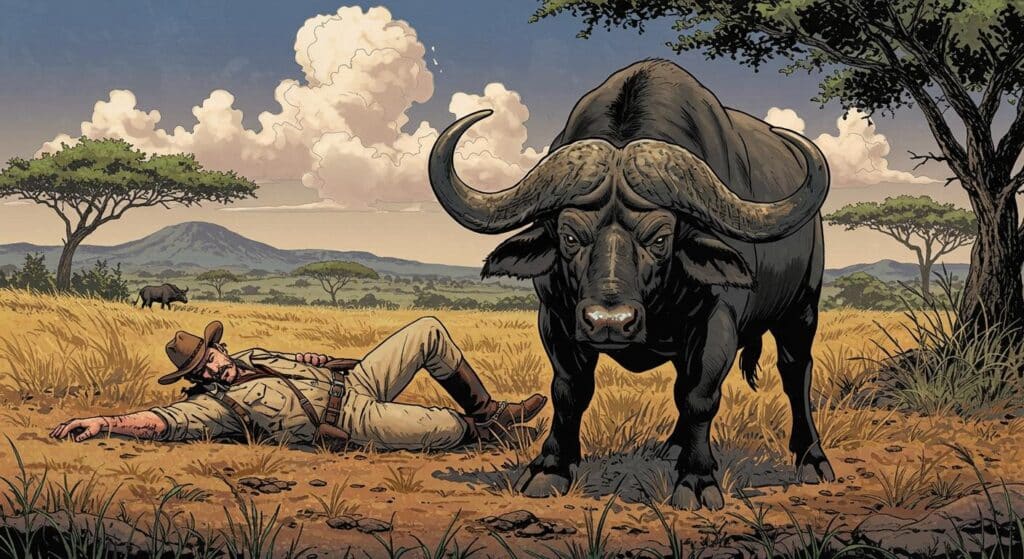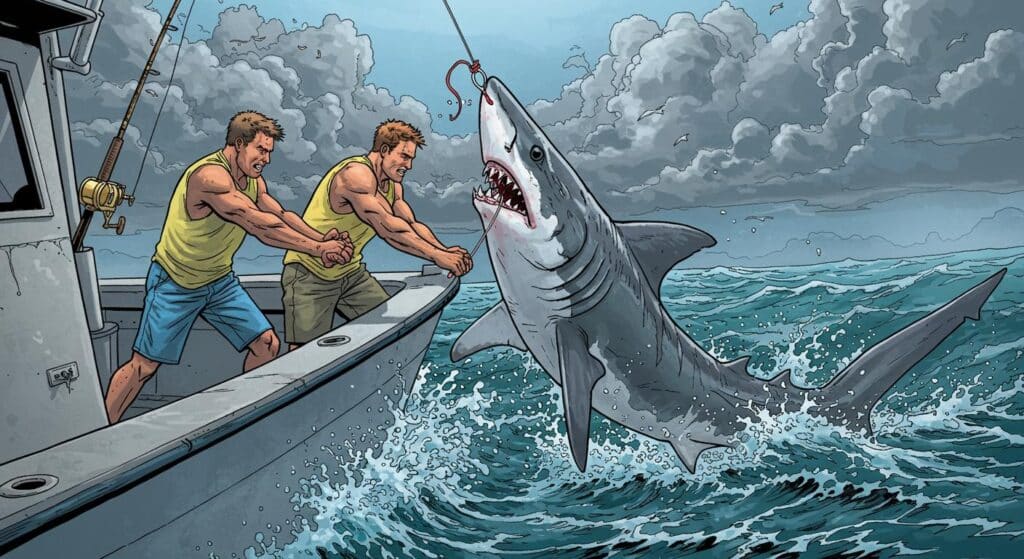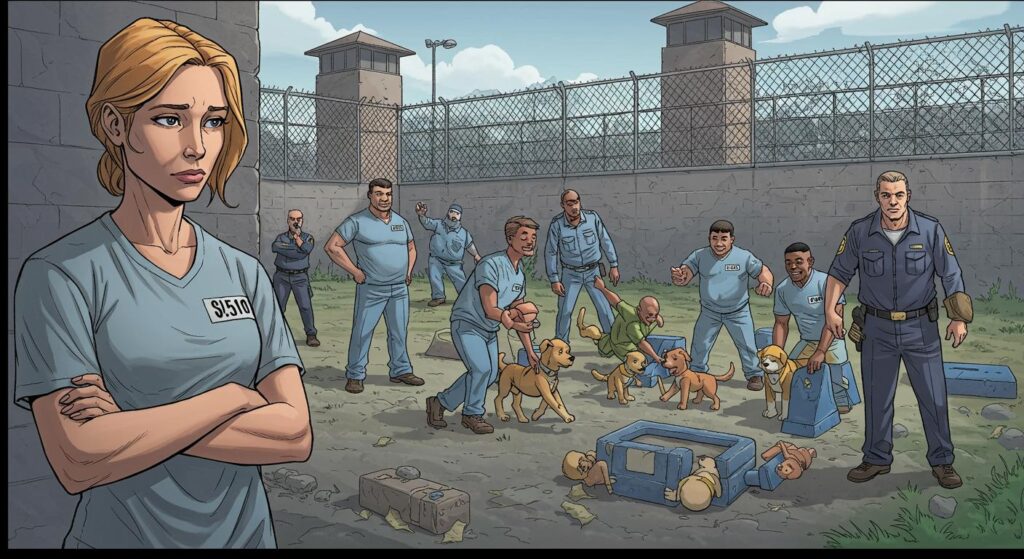Not every leap in life ends gracefully, as evidenced by a recent episode in Nottinghamshire where a deer’s hope for an athletic exit met an uncompromising wire fence. According to UPI, Brinsley Animal Rescue was called into action after a woman spotted a deer firmly lodged in a wire fence—a scenario that had already dragged on for several hours by the time help arrived.
Panic, Patience, and the Power of a Blanket
As documented by UPI, the woman who discovered the situation took it upon herself to remain with the deer, reportedly attempting to provide reassurance while waiting for rescuers. The animal rescue team shared on social media—details relayed in the outlet’s report—that when they arrived, the deer was in the throes of panic, “firmly trapped in the strong wire netting.” It took an improvised tactic—covering the deer—to calm it down enough for a careful extraction. One wonders if this is standard field protocol or the sort of improvisation that experience (and a fair bit of healthy fear of flailing antlers) demands.
The deer’s journey wasn’t over at the fence post. The animal was then transported to a veterinarian for further examination, with rescuers stating—again, as reported by UPI—that it was “recovering well” by the time all was said and done. The patience of the good Samaritan, paired with the steady hands of the rescue team, seems to have turned what could have been a miserable misadventure into a minor comeback story. Does standing vigil with an anxious deer rank high in acts of neighborliness? If so, one local resident likely jumped a few spots on the list.
Fences: Underrated Players in Wildlife Follies
The recurring motif of four-legged creatures versus property boundaries is almost its own genre at this point. Fences—ostensibly simple barriers—have an uncanny knack for finding their way into tales of animal misjudgment. As highlighted in the account reviewed by UPI, this unlucky deer simply miscalculated, discovering that an average bit of wire could prove every bit as formidable as a river or ravine. It’s tempting to speculate whether the local animal population has evolved any folklore of their own about such traps, passing on cautionary tales about places where “the grass is greener, but the exit strategy questionable.”
The rescue operation, described by the outlet, unfolded without major drama, but not for lack of initial distress. It’s worth wondering if, after this fence incident, our deer friend has discovered a new appreciation for paths that don’t involve low-level acrobatics.
The Odd Comfort of an Almost-Disaster
The image of the deer, first panicking and then subdued under a blanket before its eventual liberation, invites more questions than answers. What is the mental arithmetic for a wild deer facing a man-made barrier? Is there a fleeting moment of sheepish regret wedged between the panic and fatigue? And, perhaps more curiously, what motivates someone to patiently guard a wild animal for hours, improvising comfort under unlikely circumstances?
The scenario, as described in detail by UPI, offers a blend of clumsy animal misfortune and quietly impressive human intervention. It’s an unlikely scene of camaraderie: one panicked, one patient, both waiting for a solution neither could achieve alone.
Next time Brinsley Animal Rescue fields a call about a deer and a fence, they’ll no doubt have their blanket strategy at the ready—and perhaps a few extra biscuits of encouragement for the residents who wait and worry. The deer, if it has any sense of self-preservation mixed with memory, will weigh its next leap with slightly more calculation. Still, the countryside abides, fences persist, and so do stories like these—where dignity is optional and persistence, apparently, is everything.







